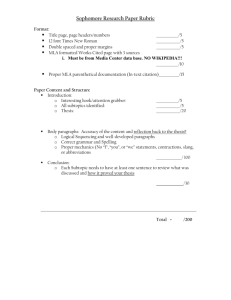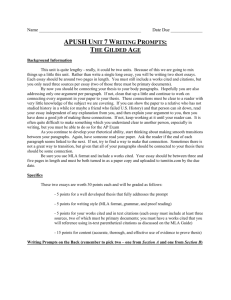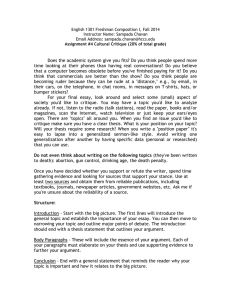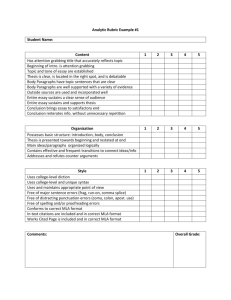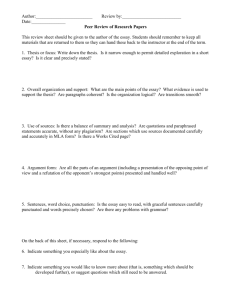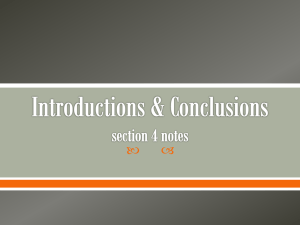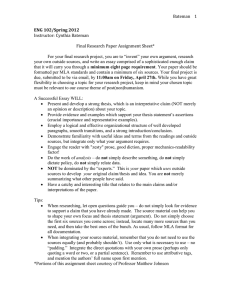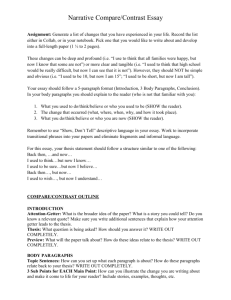Pointers
advertisement
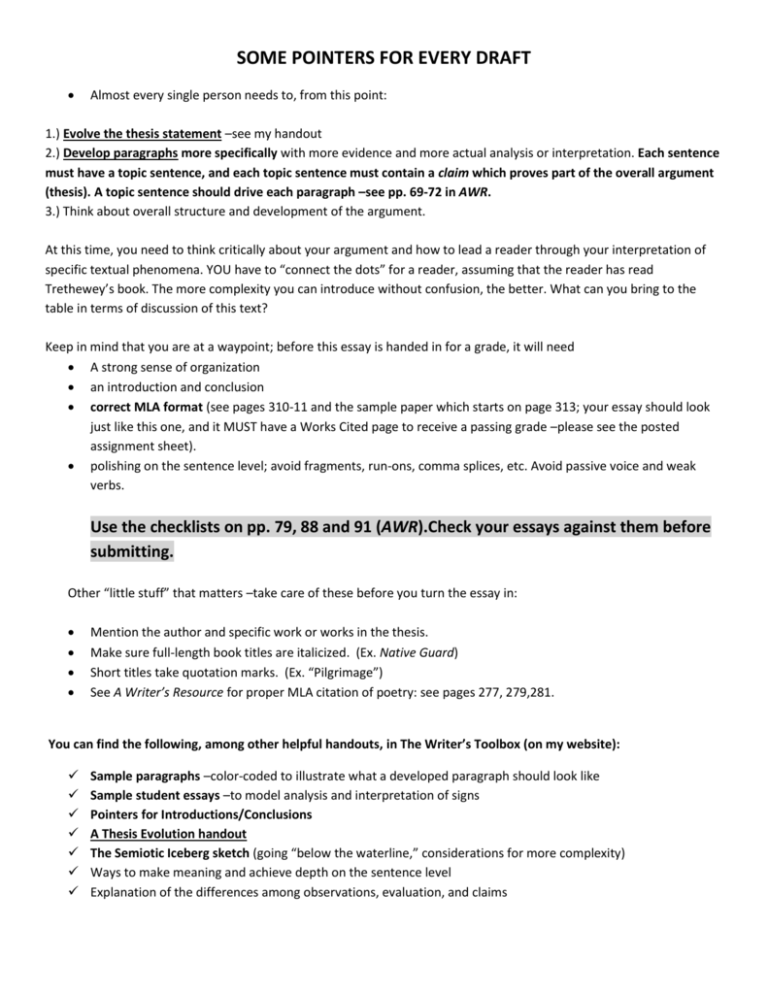
SOME POINTERS FOR EVERY DRAFT Almost every single person needs to, from this point: 1.) Evolve the thesis statement –see my handout 2.) Develop paragraphs more specifically with more evidence and more actual analysis or interpretation. Each sentence must have a topic sentence, and each topic sentence must contain a claim which proves part of the overall argument (thesis). A topic sentence should drive each paragraph –see pp. 69-72 in AWR. 3.) Think about overall structure and development of the argument. At this time, you need to think critically about your argument and how to lead a reader through your interpretation of specific textual phenomena. YOU have to “connect the dots” for a reader, assuming that the reader has read Trethewey’s book. The more complexity you can introduce without confusion, the better. What can you bring to the table in terms of discussion of this text? Keep in mind that you are at a waypoint; before this essay is handed in for a grade, it will need A strong sense of organization an introduction and conclusion correct MLA format (see pages 310-11 and the sample paper which starts on page 313; your essay should look just like this one, and it MUST have a Works Cited page to receive a passing grade –please see the posted assignment sheet). polishing on the sentence level; avoid fragments, run-ons, comma splices, etc. Avoid passive voice and weak verbs. Use the checklists on pp. 79, 88 and 91 (AWR).Check your essays against them before submitting. Other “little stuff” that matters –take care of these before you turn the essay in: Mention the author and specific work or works in the thesis. Make sure full-length book titles are italicized. (Ex. Native Guard) Short titles take quotation marks. (Ex. “Pilgrimage”) See A Writer’s Resource for proper MLA citation of poetry: see pages 277, 279,281. You can find the following, among other helpful handouts, in The Writer’s Toolbox (on my website): Sample paragraphs –color-coded to illustrate what a developed paragraph should look like Sample student essays –to model analysis and interpretation of signs Pointers for Introductions/Conclusions A Thesis Evolution handout The Semiotic Iceberg sketch (going “below the waterline,” considerations for more complexity) Ways to make meaning and achieve depth on the sentence level Explanation of the differences among observations, evaluation, and claims

